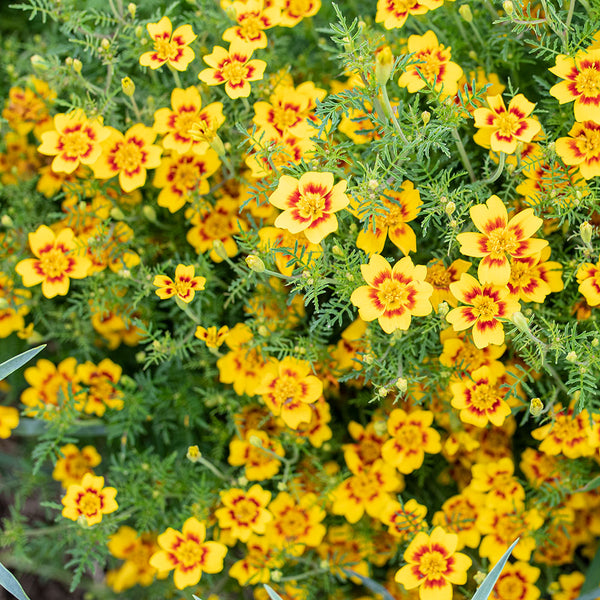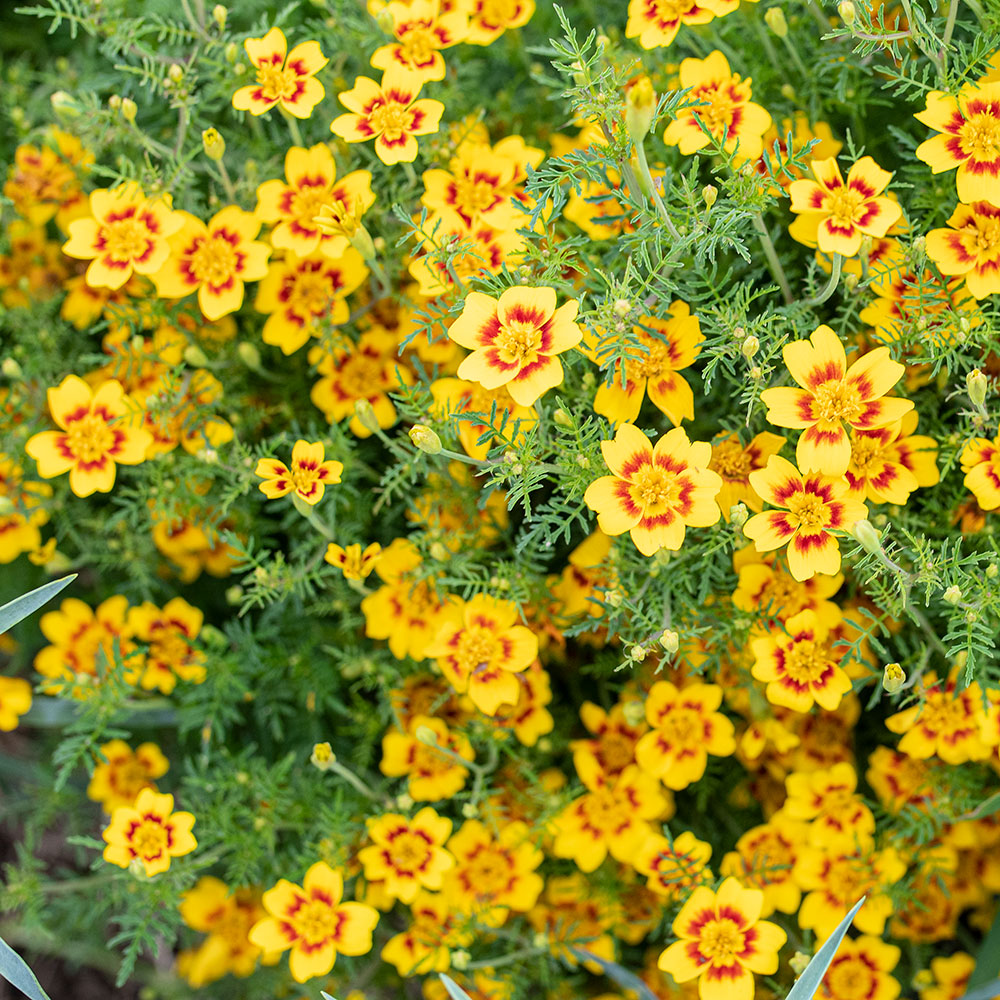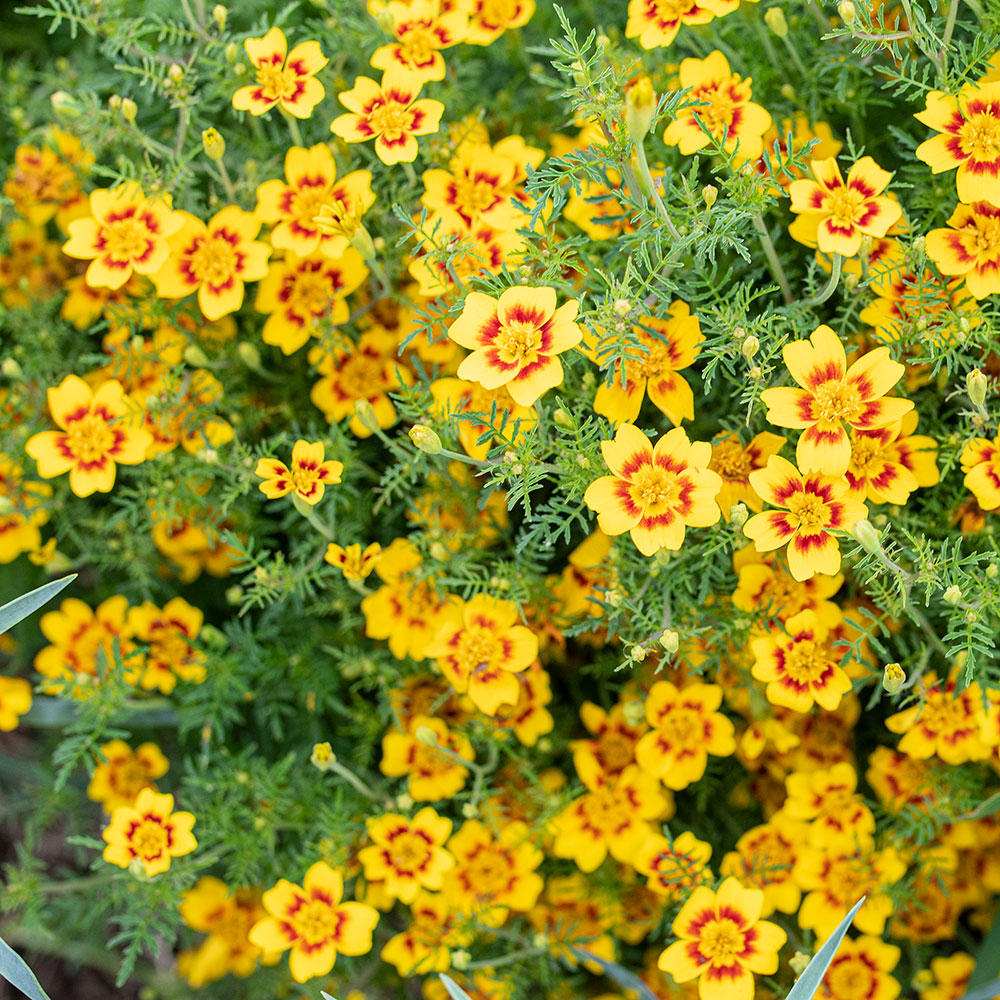SOWING INSTRUCTIONS
Seed To Bloom:
8-10 weeks
Starting Indoors:
Sow 6-8 weeks before last frost. Sow seeds thinly and keep at 65-75°F.
Starting Outdoors:
Direct sow after last frost.
PLACEMENT & CULTIVATION
Signet marigold is a cutie-pie and a powerhouse bloomer that edges borders and fills containers with bright flowers and delicate foliage. Stake early with short, twiggy brush to give some support in richer soils, and they will reward you with perfect mounds of bloom in summer. In addition, they attract beneficial ladybugs and hoverflies into vegetable gardens. Pinch when seedlings reach about 4" tall to encourage bushiness. Deadhead or shear lightly for new waves of bloom. The edible petals are flavored of tarragon with a spicy kick. Pinch off the white part that joins the stem, as it tends towards bitterness. People with floral allergies should be cautious.
Watering Details:
About 1" per week, though it will tolerate some drought once established.
Soil pH:
Prefers slightly acidic to neutral.
Fertilizer:
Mix in about an inch or two of compost or some organic granular fertilizer when transplanting. Flowers well with little added fertilizer, too much and foliage will be lush and flowers less abundant.
Diseases & Pests:
Be sure to space properly to avoid fungal issues such as botrytis. If insects such as spider mites, aphids, thrips, or whiteflies are an issue, treat with an insecticidal soap.
When to Cut for Bouquets:
Harvest when fowers are fully open.
































